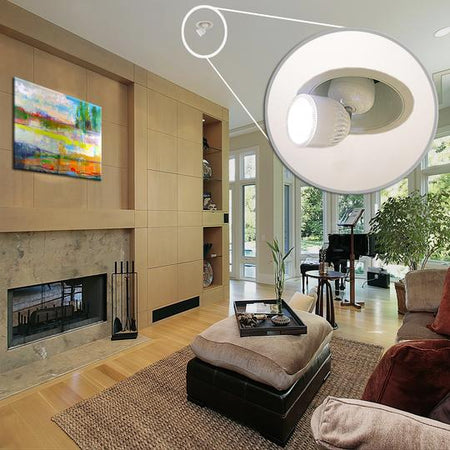What does CRI mean and why is it important?
March 08 2019 – Bart Watkins

Color Rendering Index or CRI
Unless you are a seasoned artist, you might not truly understand or appreciate the art of lighting a room. Choosing lights for your space can be quite technical. If you have a certain look you are trying to achieve in a room, restaurant, business, art gallery, etc., it is essential to understand the different aspects there are to lights, such as the color rendering index (CRI), and why it’s so important to achieving your goal for the space.

Selecting the right light
For some, lighting can be an afterthought, or just simply misunderstood. Many people think that the intensity of the light is most important; however, there are many considerations such and color temperature and the CRI of the light source. If your work is hanging in a restaurant, for example, they might want dim lighting which might work great for the space—but it might also create a different environment from what you intended. Or, if you are hanging your work in a gallery, the lighting might be very intense, and this will affect the way your painting is seen by customers and visitors. However; in each situation, the intensity of the light on your artwork is far less important than the quality of the light. These are why understanding CRI is so important—here are some key things to know.
CRI essentially refers to how different types of illumination, or light, affects the color of objects as they are perceived when the light hit them. CRI compares the light source to the quality of sunlight which is 100 CRI The index provides lighting manufacturers a way to describe the quality of the light produced by a type of light. To do this, they manufacture lights on a scale of 1-100:
- High-pressure sodium light sources have a CRI around 24
- Mercury vapor light sources have a CRI around 49
- Fluorescent light sources have a CRI range between 50 and 85 depending on the phosphate coating of the bulb
- Metal halide light sources have a CRI range between 75 and 95
- Modern LEDs have a broad range of CRI up to 95
Conclusion
What do those CRI measurements mean? Simply put, the lower the CRI, the less accurate the true colors will be depicted. Therefore, if you are shining a light on a table where your food will be placed, you’d want a higher level CRI. The same goes for a piece of art—if the light shining on your painting or photo has a low CRI, the colors that you used or captured are not going to appear as you intended. The closer the CRI rating is to 100, the more the colors will appear as they would in perfect natural, true lighting.

There might be some instances when a lower CRI is suitable, but never in the case of lighting artwork or any type of craft or hobby lighting. For these applications, you should use a minimum of 90 CRI. Always think about the object or objects you are lighting before you buy a lighting fixture. It’s never a bad idea to consult a lighting specialist at the store where you are planning purchase your lights—they should be very knowledgeable and able to help you achieve the look for which you are hoping.



